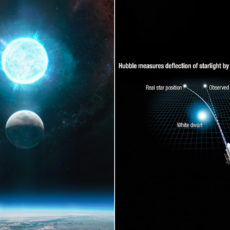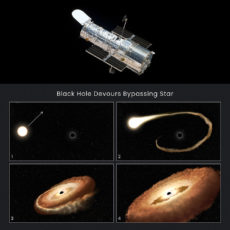
NASA / ESA’s Hubble Space Telescope observed a hazy galaxy, classified as Messier 85 (M85) in the constellation Coma Berenices (Berenice’s Hair) located approximately 50 million light-years from Earth. First discovered by Pierre Méchain in 1781, M85 is either a lenticular or an elliptical galaxy, and currently interacting with NGC 4394, which located out of frame to the upper left.

What sets Messier 85 apart from similar galaxies is the fact that it may not contain a supermassive black hole at its center, or at least based on measurements and velocities of stars in the galaxy. Hubble’s Wide Field Camera 3 captured this image, which extends its capability to not only by seeing deeper into the universe, but also by provide images in three broad regions of the spectrum—UV-Visible-NIR.
- BRIGHT, SHARP VIEWS ANYWHERE: Unlike many beginner telescopes, this quality refractor features fully coated glass lenses and a 70mm aperture for...
- PERFECT FIRST TELESCOPE FOR BEGINNERS: Designed for adults and kids to enjoy together, this beginner-friendly telescope sets up in minutes and...
- EASY NO-TOOL SETUP: No complicated assembly or tools needed. The full-height tripod and telescope tube set up in seconds and pack neatly into the...

About 4 billion to 7 billion years ago, M85 likely merged with another galaxy. M85 contains approximately 400 billion stars, and most of these stars are very old. However, the central region contains relatively young stars, under 3 billion years old, and these stars are thought to have formed in a late burst of star formation activity,” said NASA.







